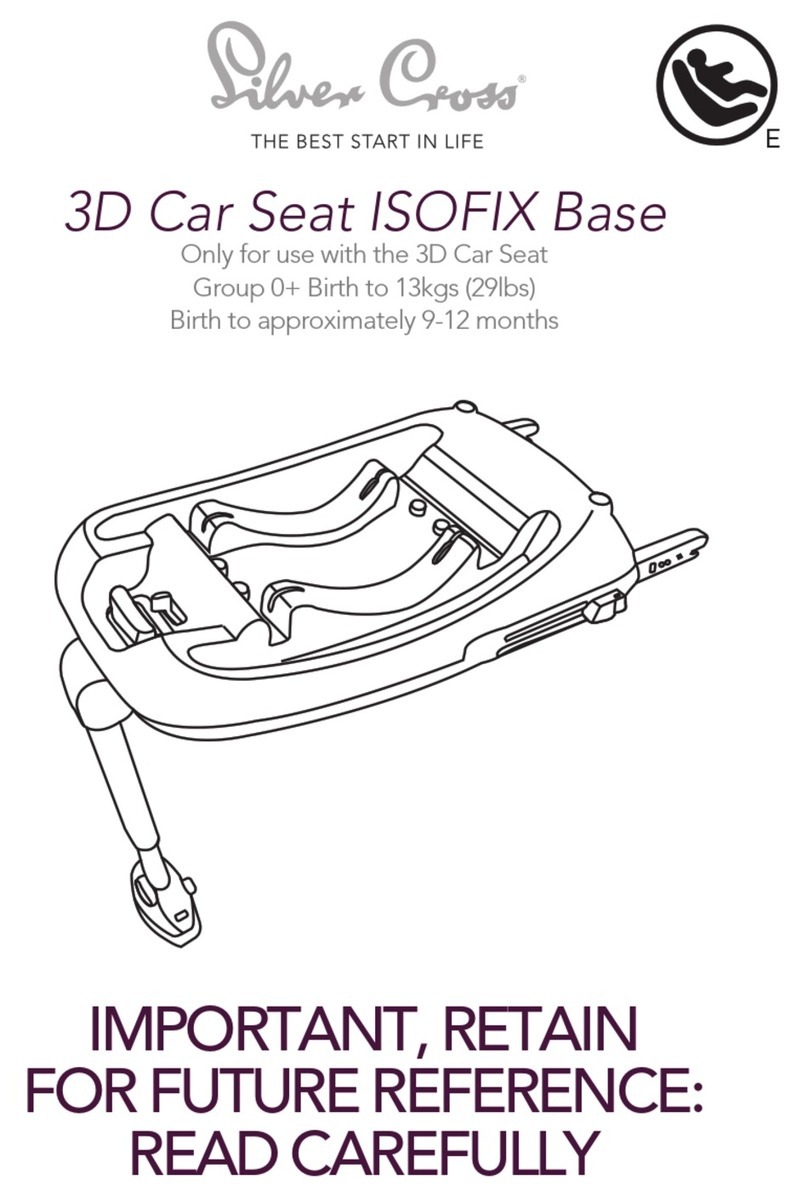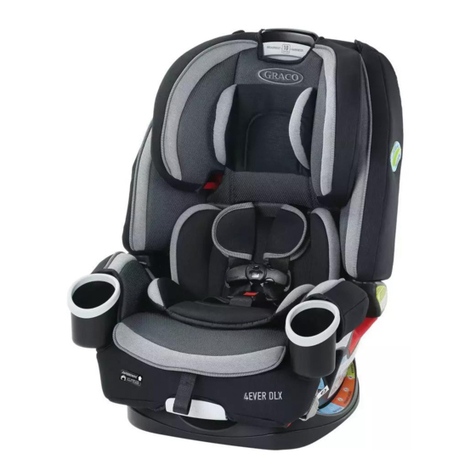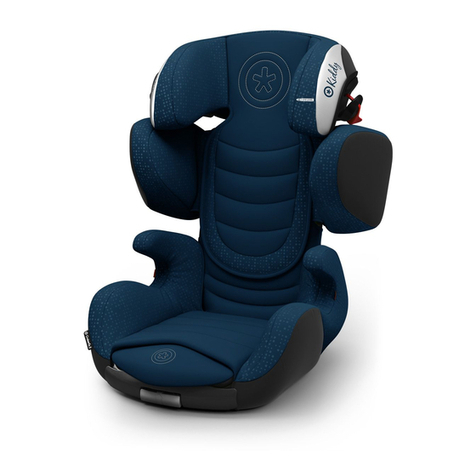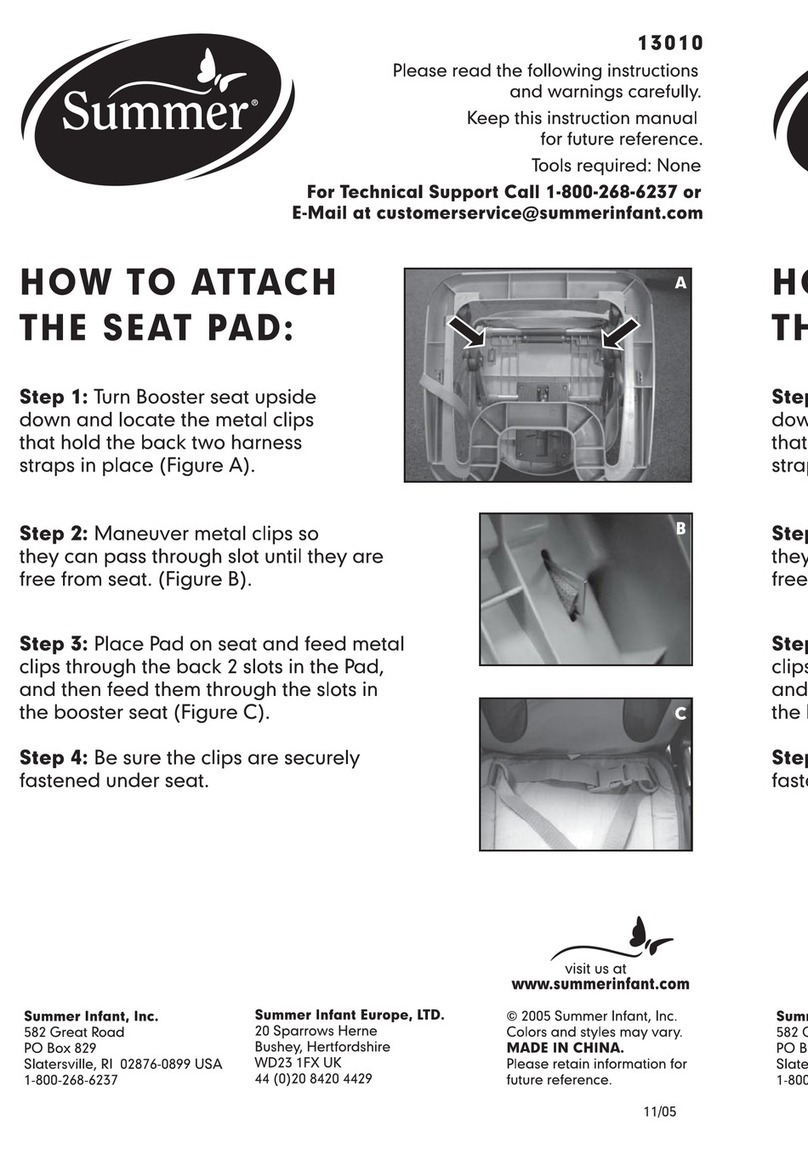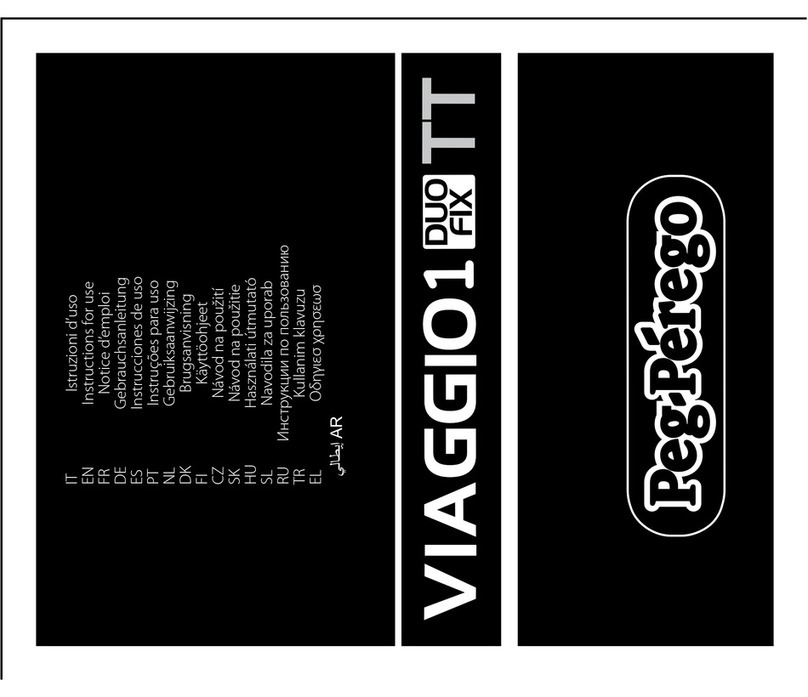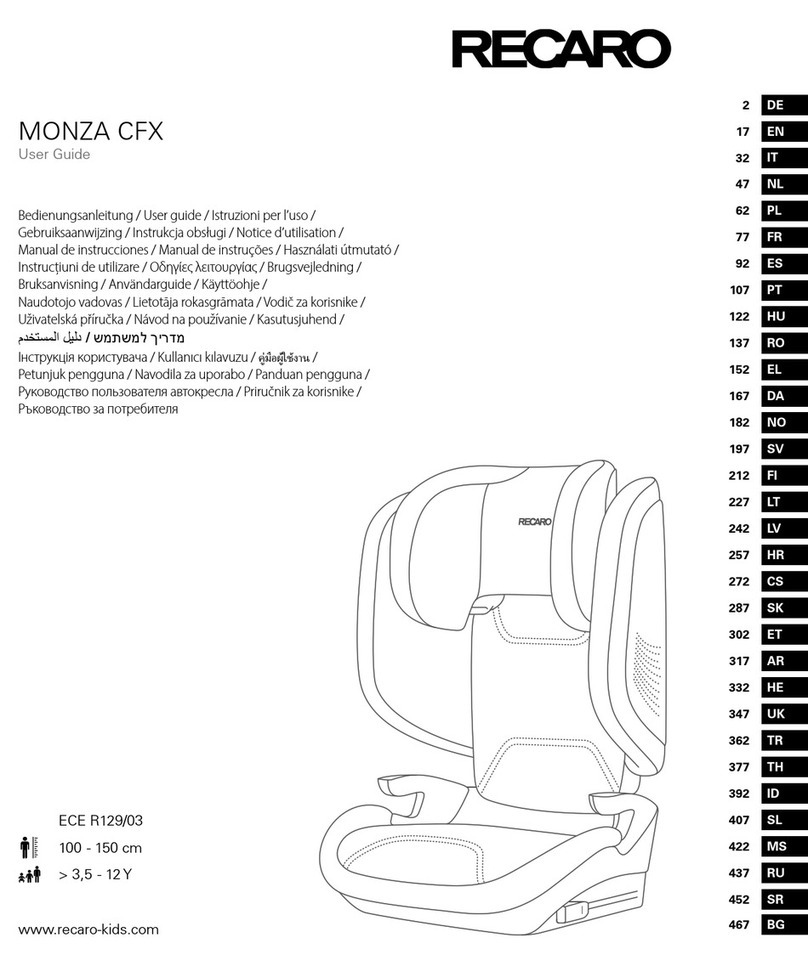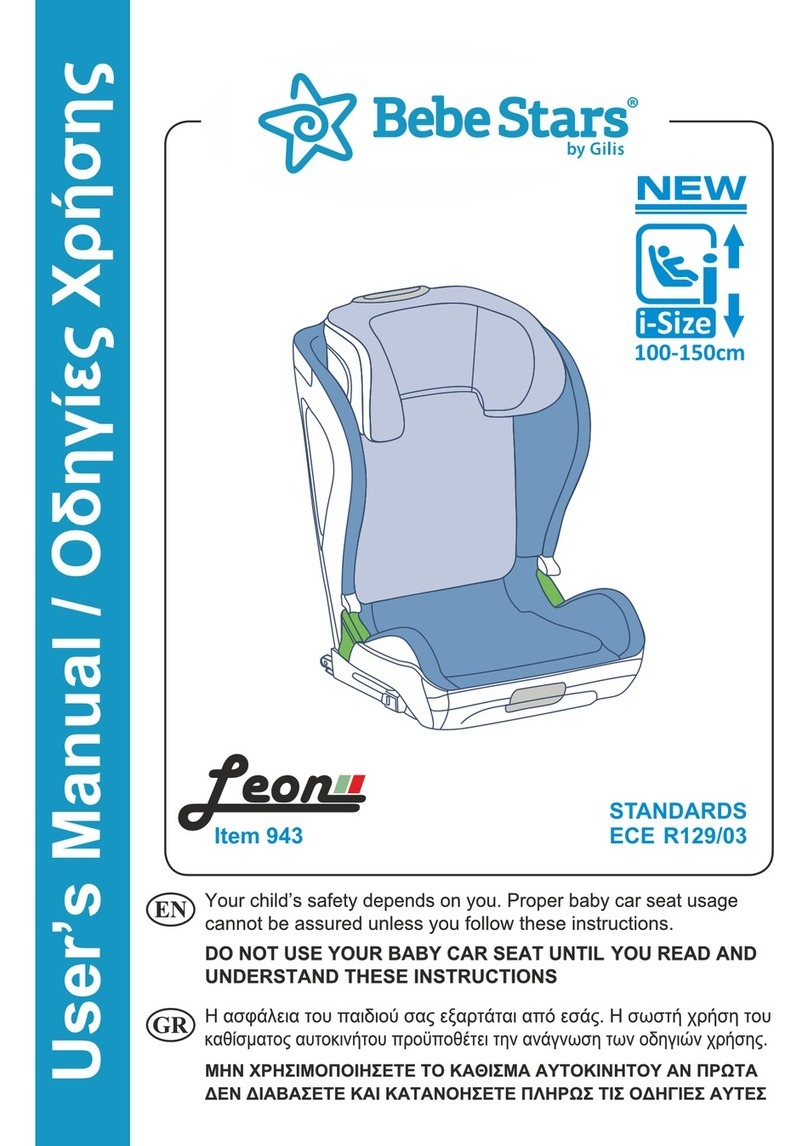TinySeats Two User manual

TinySeats Child Car Seat, UN Regulation 129.03
i-Size Universal ISOFIX Seat: 61 - 125 cm, ≤23kg
i-Size Booster Seat: 106 - 135 cm
Quick Start Guide
Important information
English
-It is very important to follow these instructions carefully and correctly.If this seat is not fitted
securely and your child is not strapped in correctly, your child and other passengers are at serious risk of
injury in the event of an accident.Pay special attention to the warnings and keep the User’s Manual with
the car seat.

1
2
3
21
4
5

6
43
7
8
IMPORTANT
Do not use forward
facing before the
child’s age
exceeds 15 months

65
Install your seat rear-facing
1. Squeeze buttons together and raise backrest to upright. [Pic 1] Note: In the event the buttons
are hard to squeeze: Gently push backrest downward and then squeeze the buttons.
2. Press button on both ISOFIX arms and extend the arms.
3. Press the button to release the ISOFIX base, then lower and rotate the base around. [Pic 2]
4. Pull the strut and connect. Make sure you hear aclick as its snaps into the ISOFIX base.[Pic 3]
5. Twist the lock on the upright tube to release the rebound bar.. Raise and lock it in position.[Pic 4]
6. Push ISOFIX connectors on both sides into the ISOFIX connection points in the vehicle until you
hear aclick.ISOFIX locking indicators should turn green on both sides.[Pic 5]
7. Push the entire seat as close as possible towards the backrest of the car seat.
8. Lift the lock plate and extend the middle section of the support leg and engage the lock.Press
the green buttons on both sides of the extended leg and extend the lower section all the way
down to the floor of the car.[Pic 6]
9. The link between backrest and support leg needs to be fully extended.[Pic 6]
10. Ensure that the indicator on the foot turns green and there is no audio signal.[Pic 6]
11. Use the relevant insert until it is too tight for your child.
12. Adjust the headrest [Pic 7]
13. Place harness tongues togetherinto the buckle until you hear aclick.[Pic 7]
14. Shoulder straps should be at the level or below the shoulders.[Pic 7]
15. Pull the harness until the it is tightened enough;you should not be able to fit more than one
finger between the shoulder straps and your child’s shoulders.[Pic 7]
Install your seat as booster
1. Squeeze both buttons together and raise backrest to upright. [Pic 8].Note:In the event you find
it difficult to access the buttons: Start by raising the rebound bar to provide more space for the
hand to reach the buttons.Lower the rebound bar once support leg has been extended.
2. Let the harness run behind the upper backplate.Store the harness tongues at the sides.
3. Push down the buckle and harness under the seat cover.
4. Extract the adult seat belt. Insert the diagonal strap into the green shoulder belt guide on the
head rest.
5. Booster may be used with or without ISOFIX.Installation using ISOFIX:
•Push ISOFIX connectors on both sides into the ISOFIX connection points in the vehicle until
you hear aclick.ISOFIX locking indicators should turn green on both sides.[Pic 5]
•Note:We recommend booster to use ISOFIX where possible
6. With the child in the seat pass the adult belt across the child and insert tongue into the buckle.
7. Ensure the lap portion of the adult belt passes under the belt guides on the seat base.
8. Ensure the diagonal portion of the adult seat belt passes over the lap belt guide..
9. Ensure the lap belt passes across the lap and is supported on the pelvis.
10. Check that there are no twists or slack in the belt.
Notice
•This is an I-Size Enhanced Child Restraint System. It is approved according to
UN Regulation No. 129, for use in I-Size compatible vehicle seating positions
as indicated by vehicle manufacturers in the vehicle user manual.
•If in doubt, consult either the Enhance Child Restraint System manufacturer
or the retailer.
Notice -Safety warning
•European Safety Standards specify the construction and performance of your car seat as well as its
components, requirements for fitting and use, instructions and markings.Your car seat has been
approved to UN Regulation No 129.03.
•Harness systems cannot be designed to be completely “child proof” and yet comply with the legal
requirements of UN Regulation 129.03.The harness must always be fastened and adjusted correctly,
and children encouraged to remain within the harness system.
•The cover and shoulder pads are asafety feature.Never use the child seat without them.Don’t put
your child’s safety at risk by using other makes of replacement cover, they could stop the child seat
from protecting your child as well as it should.A replacement cover is available at www.tinyseats.com
•Do not under any circumstances use arearward facing child seat on apassenger seat fitted with an
active airbag.
•Do not use aforward-facing child seat on apassenger seat fitted with an active airbag unless your
vehicle manufacturer confirms that it is safe.
•Do not use the child seat on side facing or rearward facing vehicle seats.
•Do not use anything, such as acushion or coat, to raise the child seat off the passenger seat.In an
accident the child seat and your car seat belts would not be able to protect your child as well as they
should.
•Do not attempt to dismantle, modify or add to any part of the child seat or change the way its harness
or your car seat belts are made or used.The official approval is no longer valid if modifications are
made.
•Do not allow children to play with or adjust the child seat.
•Do not leave your child seat in direct sunlight.Fittings can become hot to touch in sunny weather and
the cover may become faded.
•Do not use the seat unless you adjust the harness to fit the clothes your child is wearing – a fitting for
winter clothes may be too slack for achild wearing summer clothes.
•Do not place heavy objects on top of the seat and do not store it near direct heat sources or in direct
sunlight.
•Do not leave loose objects, such as luggage or books, in the back of your car.They must be properly
secured, because if you must stop your car suddenly loose objects will keep moving and can then
cause serious injuries.Large and heavy loose objects are aparticular risk.
•Do not leave folding passenger seats unlatched.If you must stop your car suddenly aloose seat back
could injure your child.
•Do not use your car seat where is can be trapped by the door or and folding seat if unlatched.

7
To see installation videos, scan the
QR code or visit www.tinyseats.com
Other TinySeats Car Seat manuals
Popular Car Seat manuals by other brands

STM Storchenmuehle
STM Storchenmuehle Twin 0+ Assembly and usage instructions
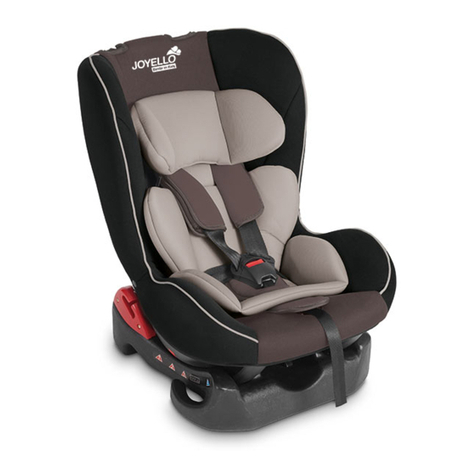
Joyello
Joyello JL-980 POPI-POPI user manual
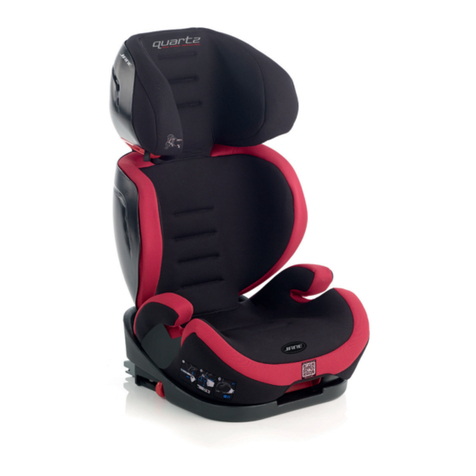
JANE
JANE QUARTZ instructions
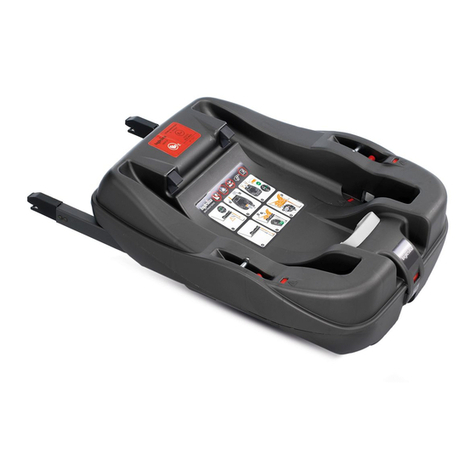
Inglesina
Inglesina Base Huggy Isofix instruction manual

BabyGo
BabyGo BURSA Assembly instructions
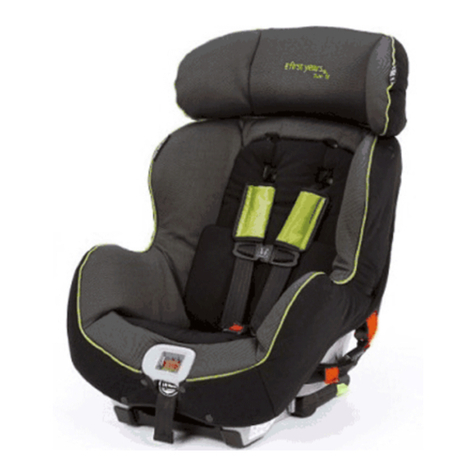
The First Years
The First Years True Fit Deluxe instruction manual



